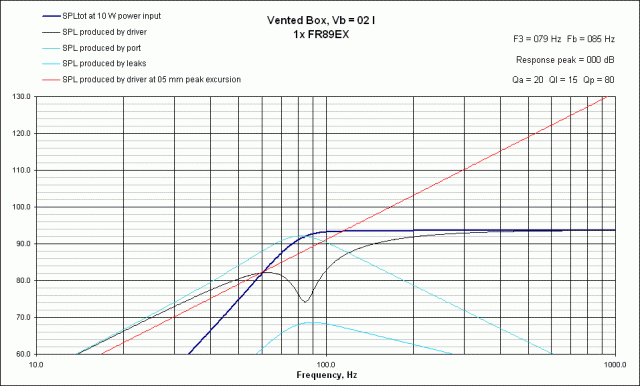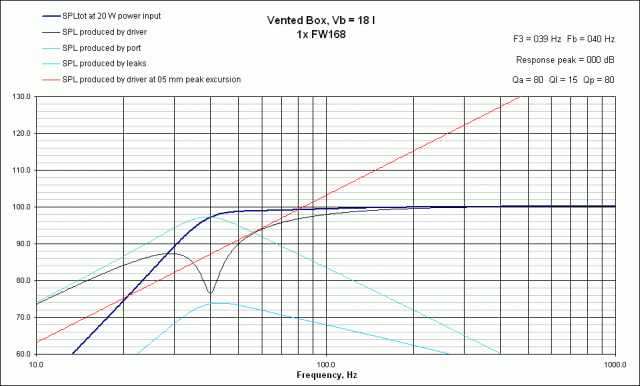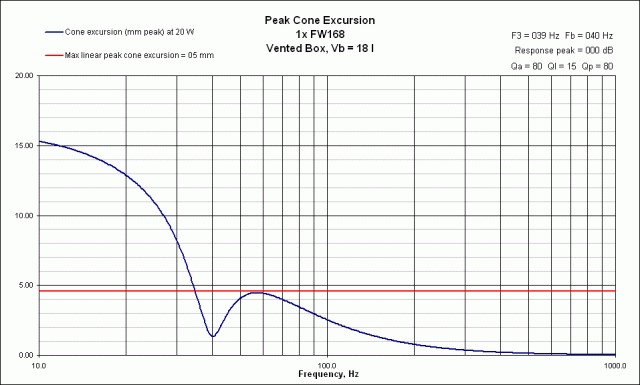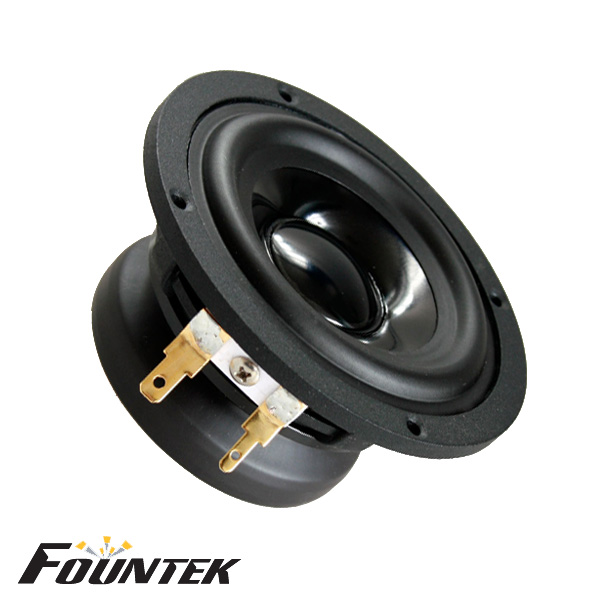
After working out my plan for a killer mini two-way system using the miniDSP and two miniAMPs, I decided that I wanted to explore the sub-sat (2.1) option a little further to see what could be accomplished in an even lower-cost system. This option in particular can meet the “can’t the speakers go on the wall?” scenario.
Here again are the configuration options for the miniAMP:
- 4 x 10W into 4 ohms
- 2 x 20W into 8 ohms
- 1 x 20W into 8 ohms and 2 x 10W into 4 ohms.
For a sub-sat system, option (3) is wanted. The drivers are best chosen with the correct impedance, to make most use of the available power (there isn’t a lot of it to spare!). So, 4 ohms for the satellites, and 8 ohms for the woofer (“sub”). The crossover point should be no higher than 150 Hz, and preferably 120 Hz or lower. As a result, the best driver choice for the satellites is a small “full-range” driver (using a tweeter would add cost and complexity back in), and the best size for this application is 3″ or perhaps 4″ – smaller drivers won’t go low enough, and larger drivers need a larger box, and will beam more as well.
The driver I’ve chosen for the satellites is the 4-ohm version of the Fountek FR89EX. This rugged-looking little driver has an excellent (on-axis) frequency response and is reported to sound good.
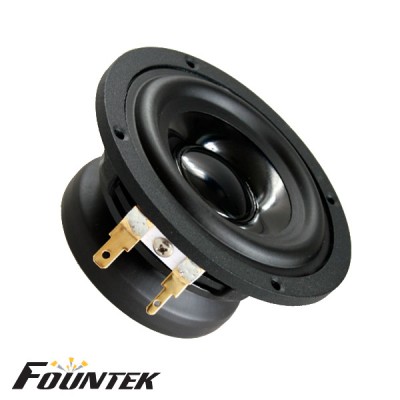
Here’s the modeled frequency response with 10W input:
With an F3 of 80 Hz it certainly meets our criteria… but wait! It’s a vented box… yep, a 1.5 liter vented box tuned to 85 Hz. Normally, I just wouldn’t go there, but hey, everything else fits well, so I’m going to give it a try, and experiment with crossover points between 80 and 120 Hz. With 10W of power, the driver is under 2.5mm of excursion down to 80 Hz, well under its Xmax of 5mm. (Yep – 5mm Xmax for a 3″ driver… crazy stuff, huh? Hopefully that means low distortion for normal operation.)
If a larger box were acceptable, a driver such as the 4″ Mark Audio CHR-70 in a 5-liter sealed box would be a good choice, and it’s only slightly more expensive than the Fountek.
Now for the woofer. This is the “.1″ part, so there’s only one of them. We want good output down to 40 Hz – lower would be nice, but then we get into drivers that are quite insensitive, or that need much larger boxes than wanted for this system. The best compromise seems to be drivers in the 6-7” range – but not subwoofers, as they are too insensitive (and a lot of them are 4 ohms, which we don’t want here). In the end, I chose the Fountek FW168, as according to the measurements on Zaph Audio it has reasonably low distortion at low frequencies, and it’s also fairly inexpensive at around $45. Here it is modeled in an 18-liter box tuned to 40 Hz, with 20 W input power:
The output level obtained for the driver is about 6 dB higher than each of the satellite drivers, so it’s a fairly good match for two satellites. The excursion plot shows that we may want to roll off the power to the woofer below around 35 Hz:
In terms of project cost, we have drivers $105, electronics $150, power supply hopefully not much as we can use a 24V switching wallwart (free in my case as I have some laying about). Plus a small chassis and assorted parts. Perhaps a total of $350-$400 if we’re careful.
